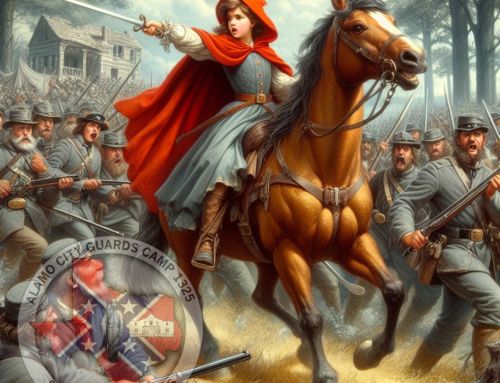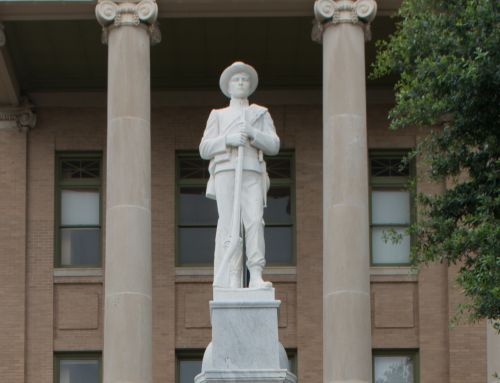The Arsenal complex in downtown San Antonio supplied ammo and provisions to troops in four major U.S. armed conflicts before H-E-B picked the spot for its San Antonio headquarters in the 1980s.
The establishment of the Arsenal was the predecessor to Fort Sam Houston and laid the groundwork for the city to become Military City USA, said Vincent Michael, executive director of the San Antonio Conservation Society.
“It is the earliest recognizable military installation in the city,” Michael said.
Founded in 1859, the Arsenal sheltered munitions and supplies bound for frontier forts in Texas and along the Mexican border. U.S. Gen. John Ellis Wool — stationed in San Antonio during the Mexican-American War — previously stashed the ammunition, wagons and animals at a site near San Pedro Springs until 1849, according to an San Antonio Express article published Nov. 14, 1965.
But the military needed a permanent home for its supplies. The Army commandeered the Alamo and turned it into its supply depot. There was so little room inside of the Church building where arms were stowed, troops and animals had to sleep on the grounds.
The church was unsuccessful, Express archives show. The Army eventually evicted squatters from the Alamo Grounds and managed to hold onto the property until 1860, spending about $5,000 on renovations during its 11-year stay.
As the Army slugged it out with the Catholic Church in local district court over the Alamo, it sought out a larger space for its arms and artillery. The Army officially established the Arsenal in 1859 at the 600 block of S. Flores St, which in its infancy primarily supplied munitions to the Department of Texas to guard settlements.
The compound wouldn’t remain in U.S. hands for long. Confederate forces overtook the Arsenal after Texas lawmakers voted Feb. 1, 1861, to secede from the United States. Governor Sam Houston, who opposed secession, refused to call a special session of the Texas Legislature to vote on the matter. But other state officials went around Houston and held their own vote: 166 to eight.
“We hold as undeniable truths that the governments of the various States, and of the confederacy itself, were established exclusively by the white race, for themselves and their posterity; that the African race had no agency in their establishment; that they were rightfully held and regarded as an inferior and dependent race, and in that condition only could their existence in this country be rendered beneficial or tolerable,” read the state’s declaration of causes for its secession.
But, it was too late. Benjamin McCulloch, a soldier in the Texas Revolution who would go on to be a brigadier general for the Confederates, beat Houston there with a group of Texans in tow. Gen. David Twiggs, a Confederate sympathizer who led U.S. forces in Texas, surrendered more than $3 million worth of cash, ordnance, wagons, animals, supplies and forts on Feb. 16, 1861. Captain Robert Henry Kirkwood Whiteley, who oversaw the Arsenal, was forced to hand over the complex and all other federal property in San Antonio to the Confederates.
[read full article]





